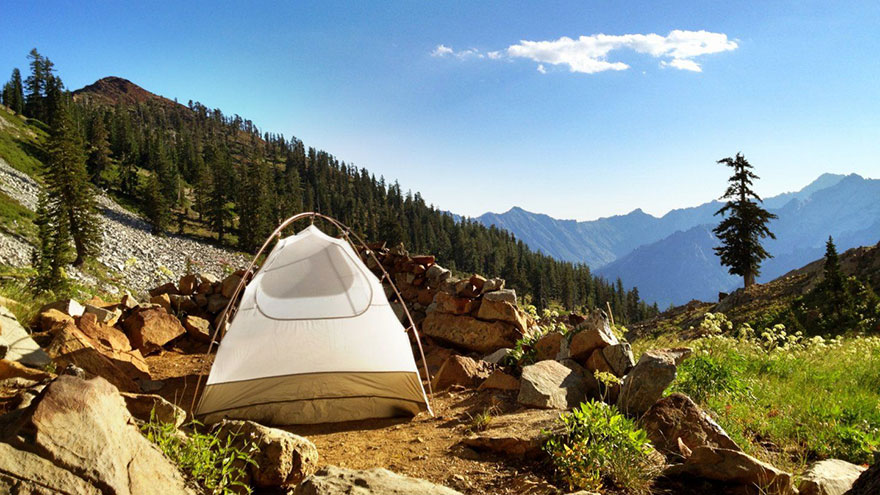Alpine Loop Camping in Colorado
A visitor to Colorado’s Alpine Triangle will travel 150 miles of paved roads to visit the the towns of Ouray, Lake City and Silverton. The scenery along any route in the area is spectacular, but one of the country’s first backcountry byways, the Alpine Scenic Loop, connects the three with 65 miles of maintained dirt road that slices through some of the most dramatic vistas in the state.
You can explore long-abandoned mining towns, fish in sparkling waterways or hike scenic side trails along the way. Extend your adventure for days at a time by camping along the way.
Private Camping
You’ll find private campgrounds in Silverton, Lake City and Ouray that provide amenities such as hot showers, Wi-Fi, hookups and dump stations. The Ouray KOA is situated on the banks of the Umcompaghre River and has a hot tub and snack bar, and can accommodate RVs up to 80 feet in length. Tent camping areas are set in trees around the outer edges of the campground.
Silverton Lakes Campground is open from May through September, with full hookups at 47 spaces and grassy areas for tents. Castle Lakes Campground in Lake City sits on 41 acres, with fishing lakes, tent sites and full hookups for any size RV.

Remote Camping
Forest Service campgrounds in more remote areas provide primitive accommodations, which usually include vault toilets, fire rings and picnic tables. Lost Campground is the most remote, with seven primitive sites available on a first-come, first-served basis.
The campground is suitable for smaller RVs and tents — maneuvering can be challenging because of trees and rocks. You can also camp at the more heavily used Wupperman, Amphitheater or South Mineral Creek campgrounds, which are closer to the towns. For a real adventure, camp at a dispersed site along one of the forest roads at no charge for up to 14 days.
Be sure to make your site on a vegetation-free, hard-packed area, and use existing fire rings or use a fire pan or mound fire techniques to avoid scars to the environment. Bring your own restroom or drive to one of the 10 situated along the loop.
When to Go
The Alpine Loop is open to wheeled vehicles from June through mid-October. Expect nights below freezing at both ends of the season, and days that may not top 80 degrees at the higher elevations. Summer thunderstorms roll in on many afternoons during July and August, bringing heavy rain, gusty winds and lightning.
Bring storm gear, your rain fly and plenty of warm clothing. Wildflowers blanket high-mountain meadows during June and July, and you’ll see autumn foliage from mid-September through early October. Snow may begin at the highest elevations in early September, but usually does not stay on the ground.
If you’re camping at dispersed locations at either end of the season, bring a few days’ worth of extra food, just in case a freak snowstorm delays your departure for a day or two.
Other Considerations
High elevations can cause altitude sickness in some people. You’ll find symptoms are greatly reduced by replacing fluids lost by your body through its increased respiration. Over-the-counter remedies can help alleviate symptoms such as headaches and nausea until you acclimate.
If symptoms worsen or persist, you’ll find medical facilities in each of the three major towns along the loop. Keep a clean camp and store your food in a hard-sided RV, the car trunk or a wildlife-proof container at least 100 feet from your tent to avoid attracting one of the loop’s plentiful bears.
Keep children, pets and small-framed adults close by to prevent them from being considered prey by a hungry mountain lion.

